Abstract
In two experiments, rats chose between a standard fixed-duration food-associated stimulus and a stimulus whose duration was the time remaining to reinforcement in an elapsing comparison interval. In Experiment 1, 4 rats responded in a time-left procedure wherein a single initial-link variable-interval schedule set up two potential terminal links simultaneously. As time elapsed in the initial-link schedule, the choice was between a standard fixed-interval 30-s terminal link and a time-left terminal link whose programmed interval requirement equaled 90 s minus the elapsed time in the initial link. Rats generally responded more on the lever with the shortest programmed terminal-link duration, but the temporal parameters of the procedure were found to vary with response distributions. Contrary to previous reports, therefore, time-left data were well predicted by choice models that make no assumptions about animal timing. In Experiment 2, 8 rats responded on a concurrent-chains schedule with independent variable-interval initial links and a time-left terminal link in one of the choice schedules. On the time-left lever, the programmed terminal-link delay equaled 90 s minus the elapsed time in the time-left initial link. On the standard lever, terminal-link responses were reinforced according to a variable-interval schedule whose average value varied over four conditions. Relative time-left initial-link responses increased in the elapsing time-left initial-link schedule as the time-left terminal link became shorter relative to the standard terminal link. Scalar expectancy theory failed to predict the resultant data, but a modified version of the delay-reduction model made good predictions. An analysis of the elaboration of scalar expectancy theory for variable delays demonstrated that the model is poorly formulated for arithmetically distributed delays.
Full text
PDF
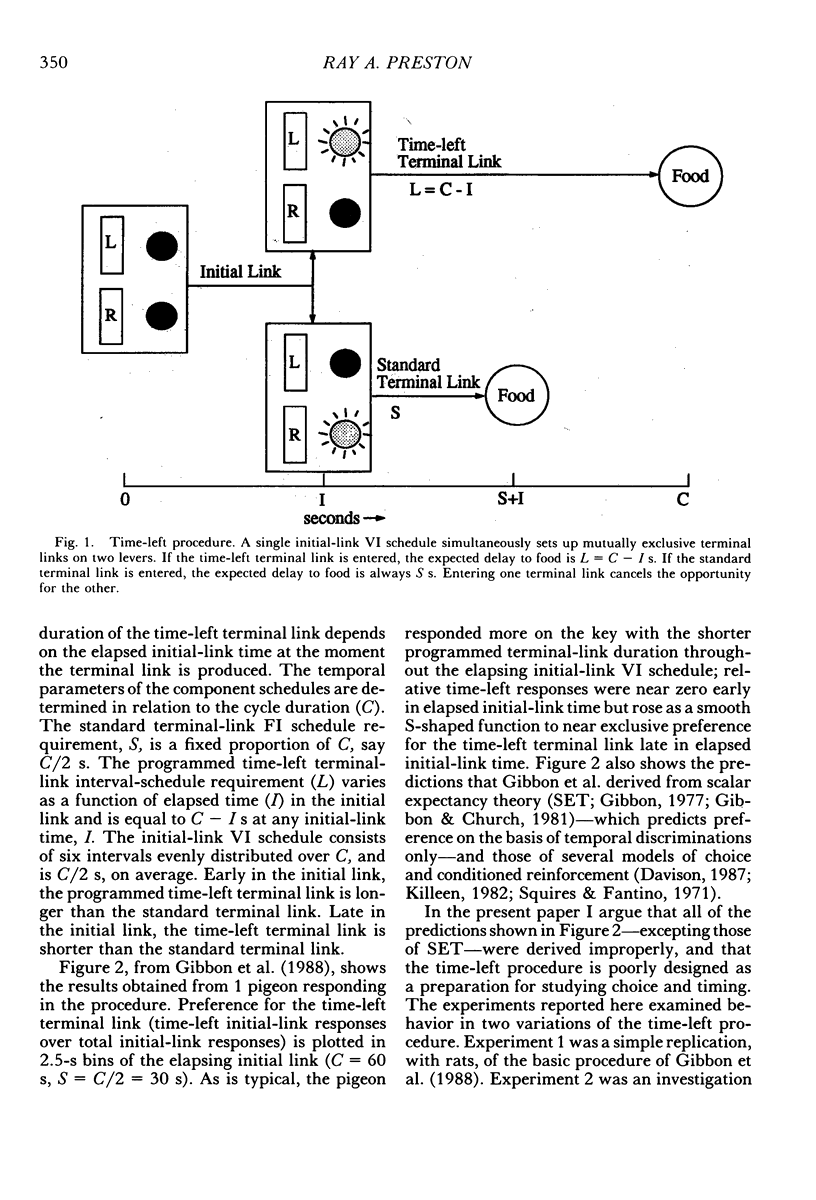



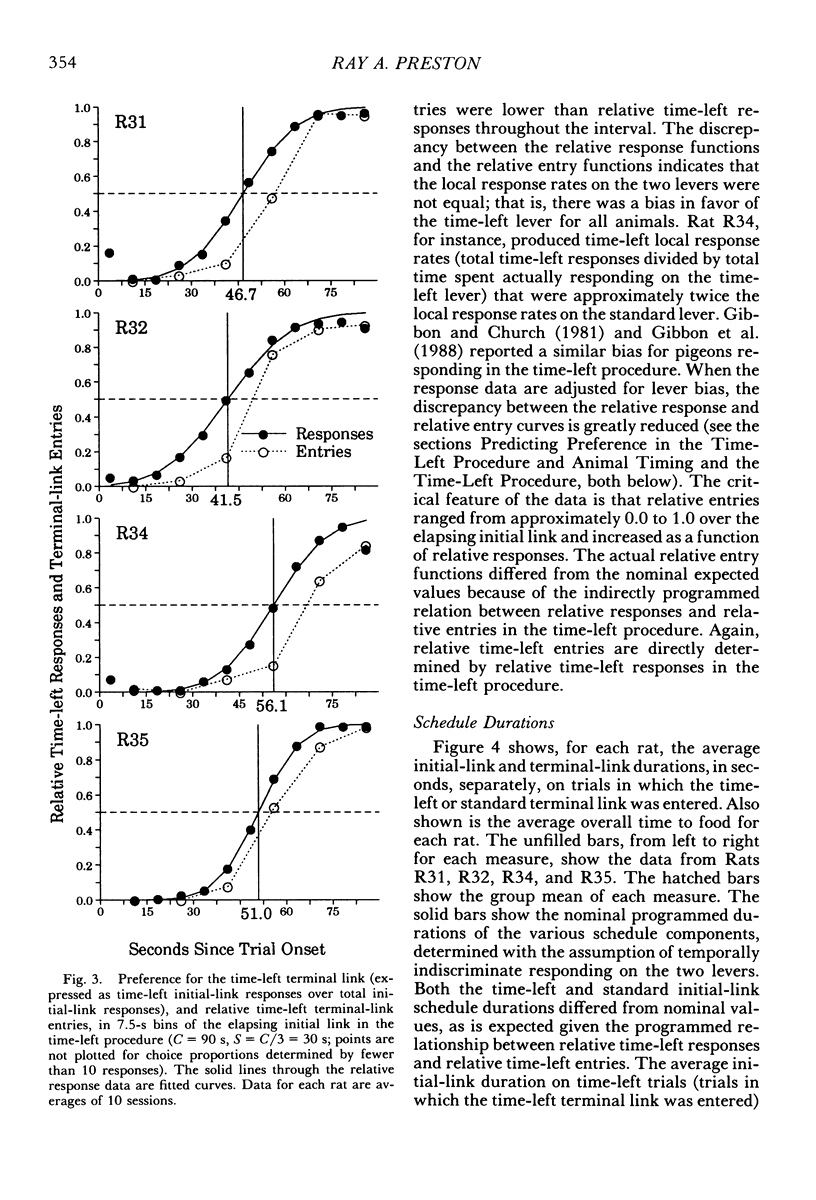

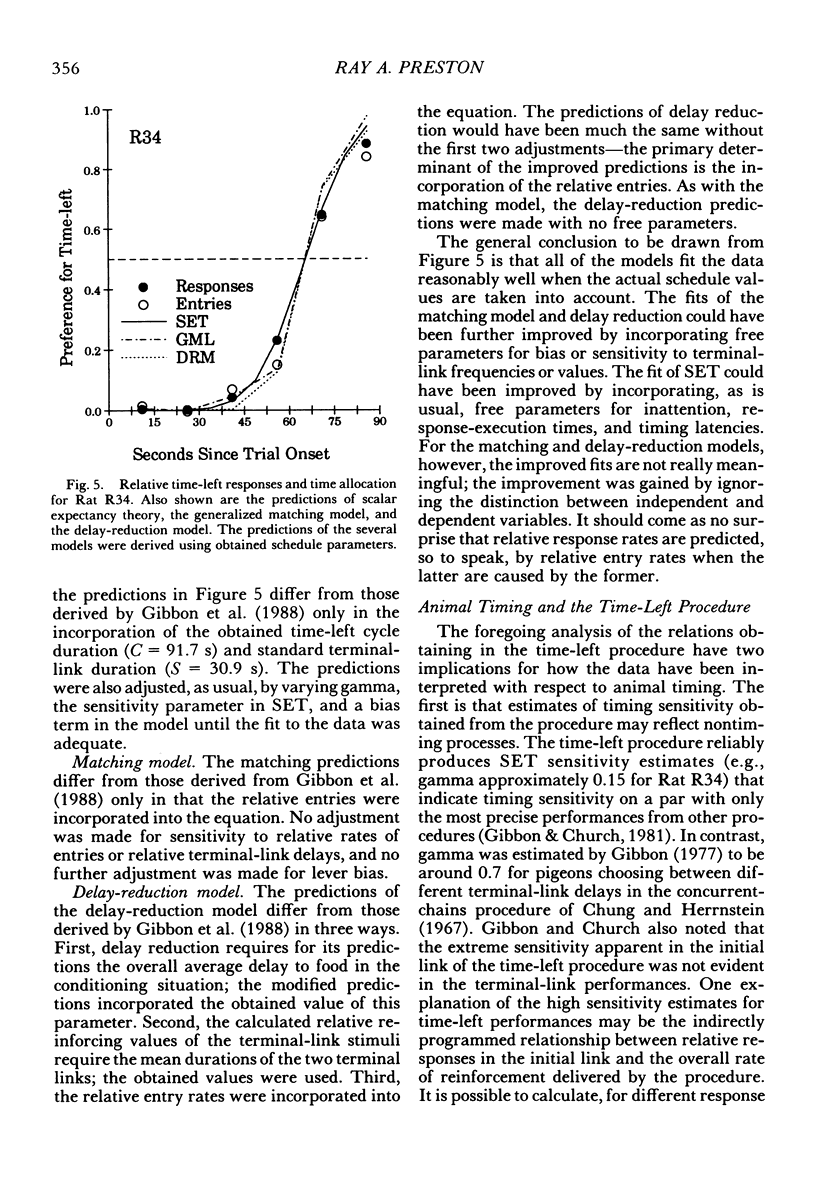


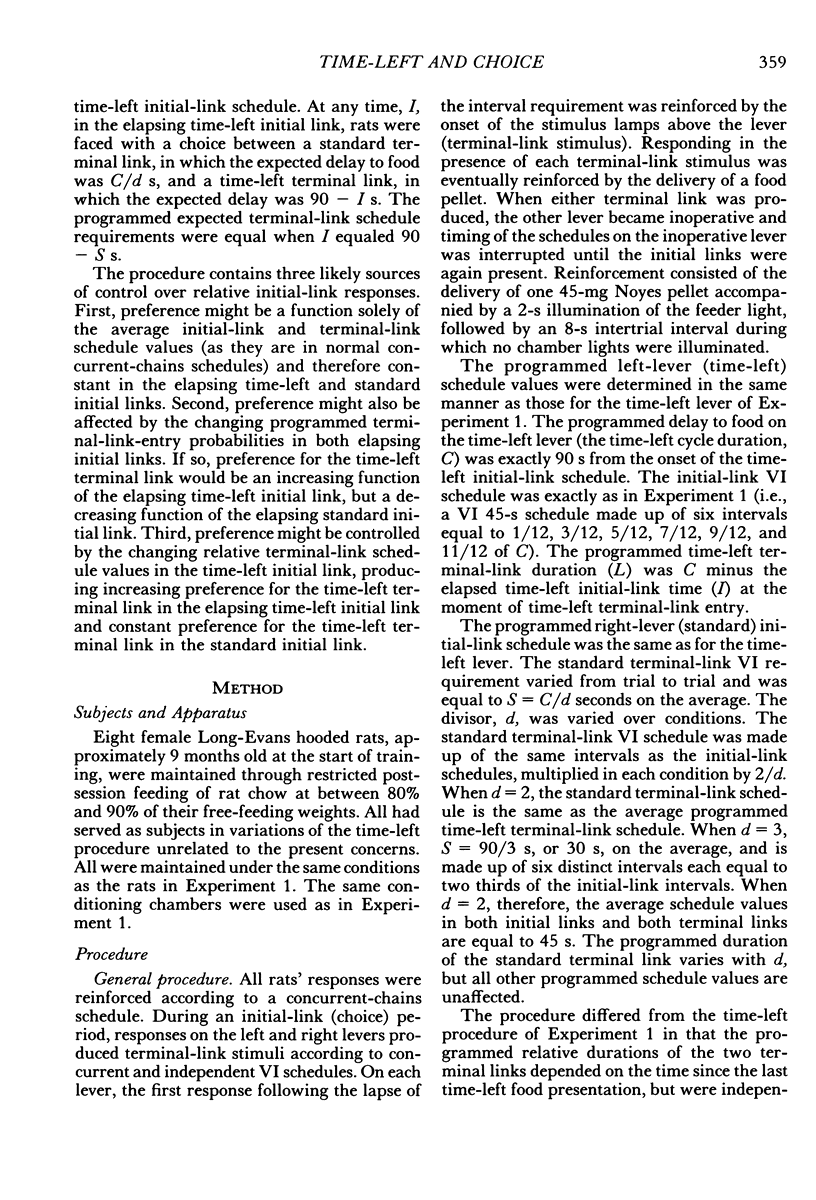


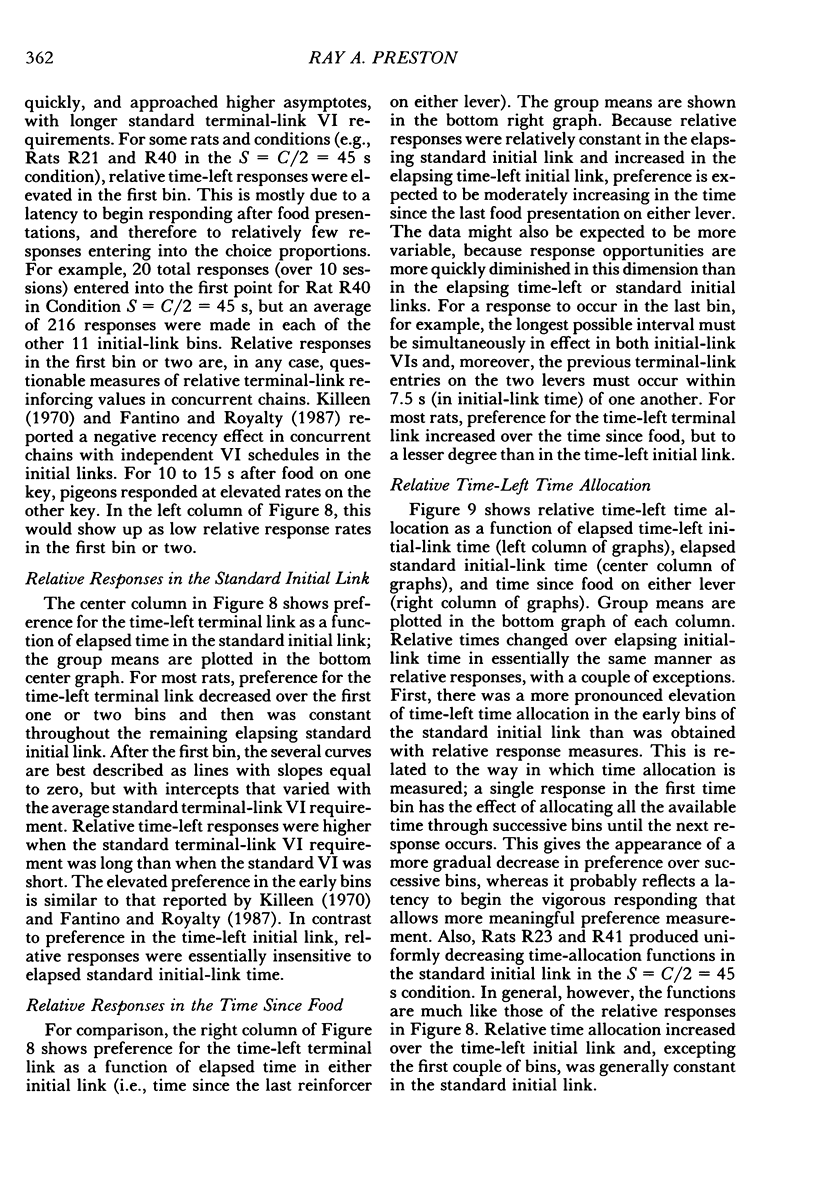
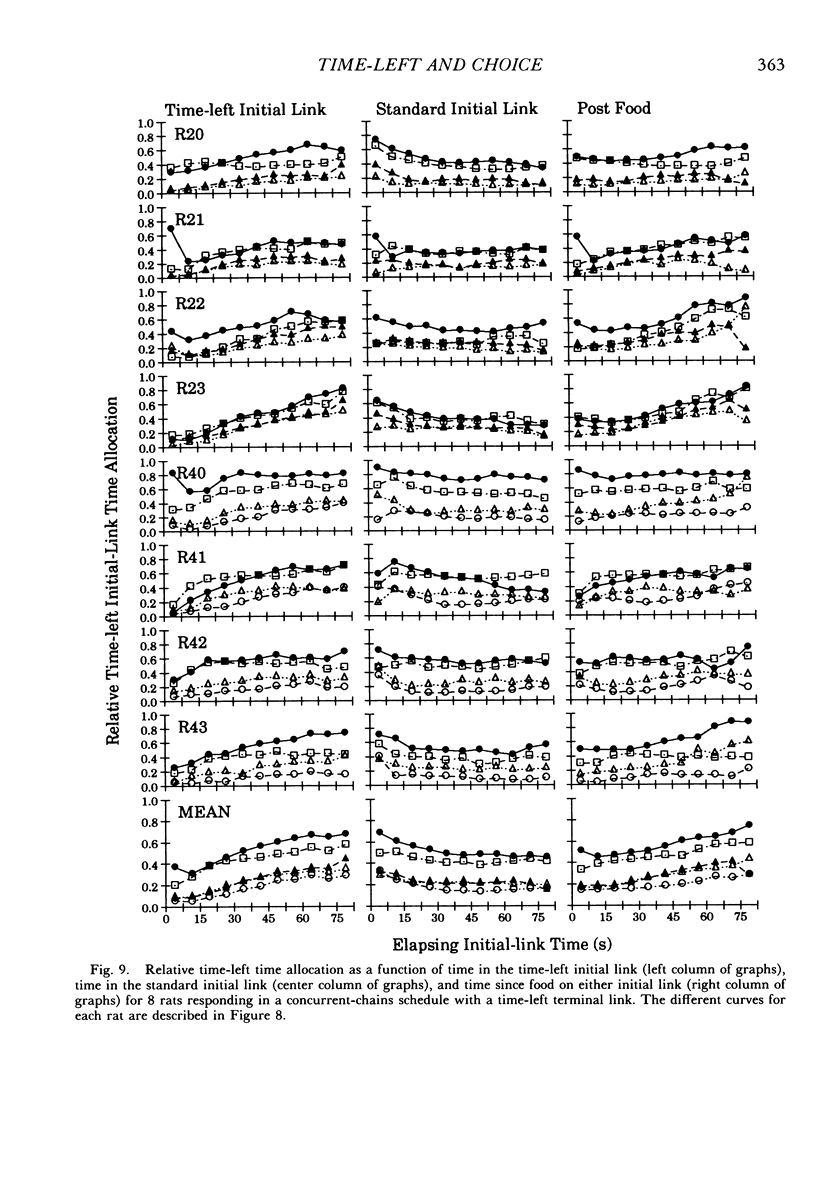
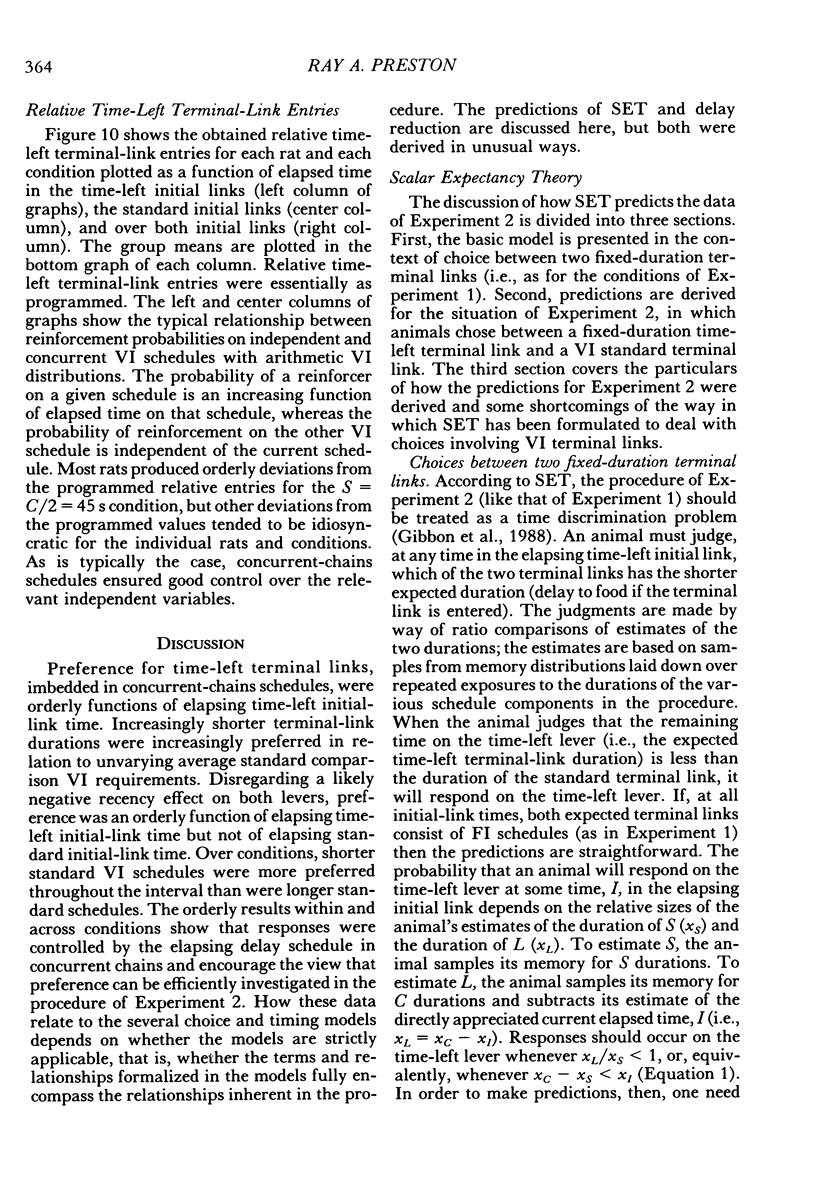



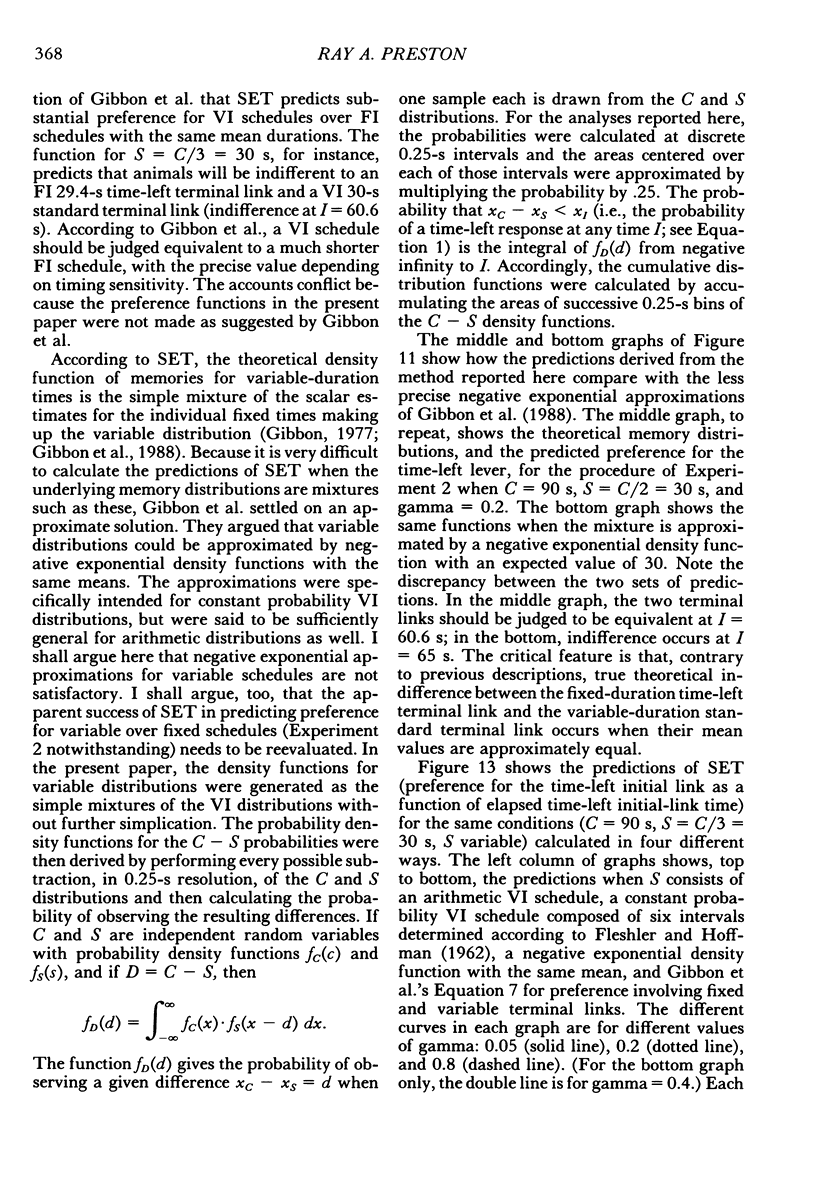

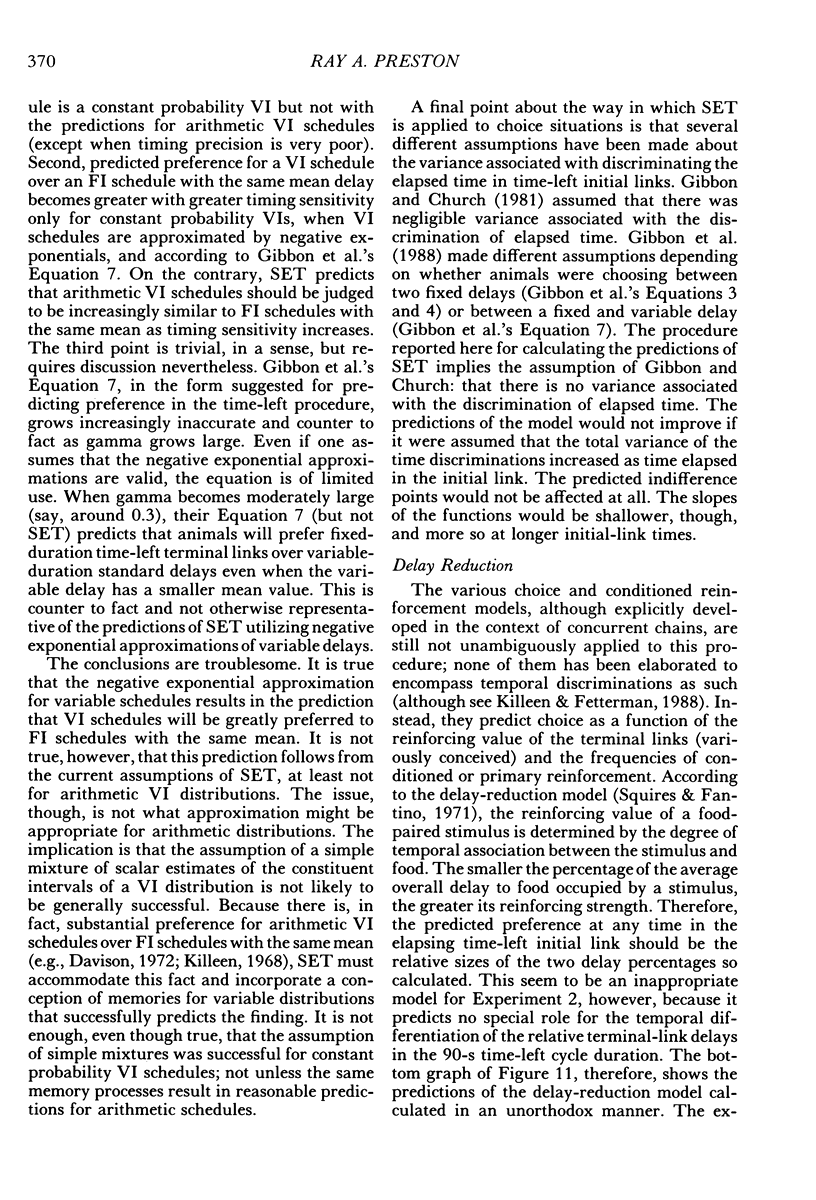
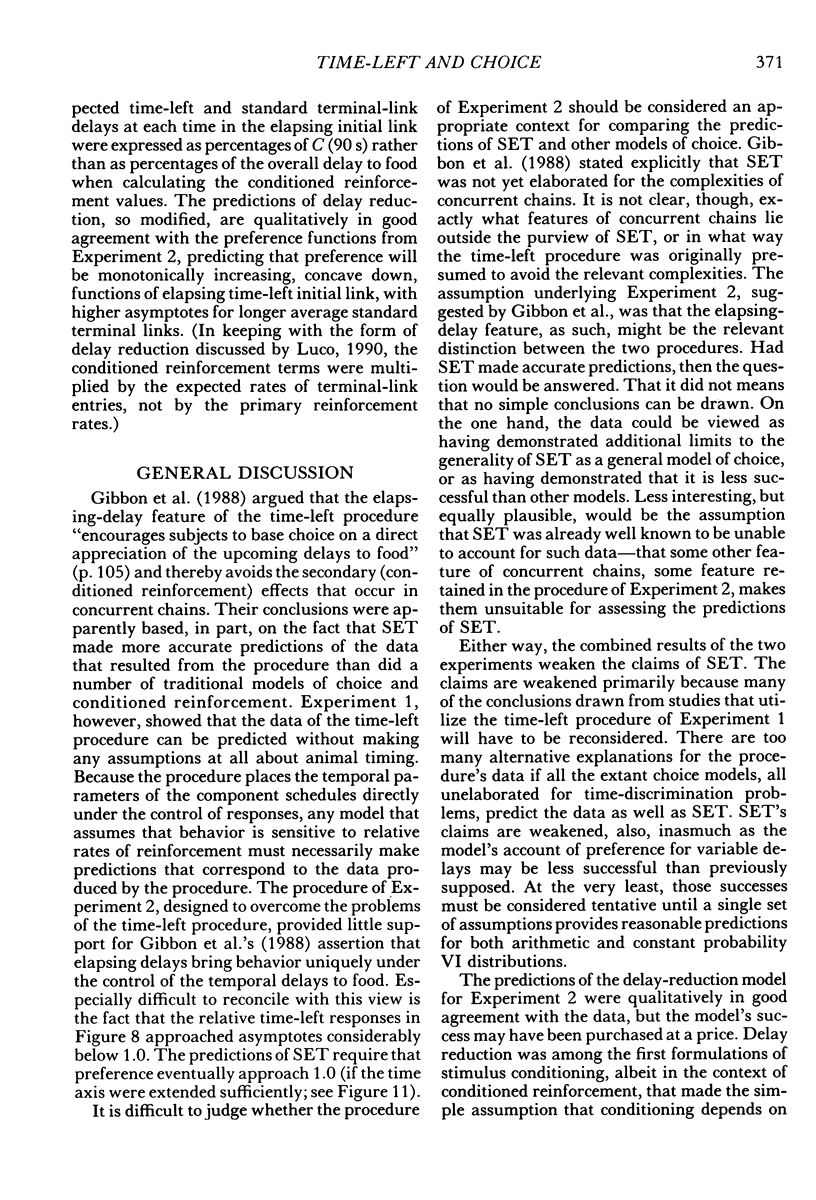

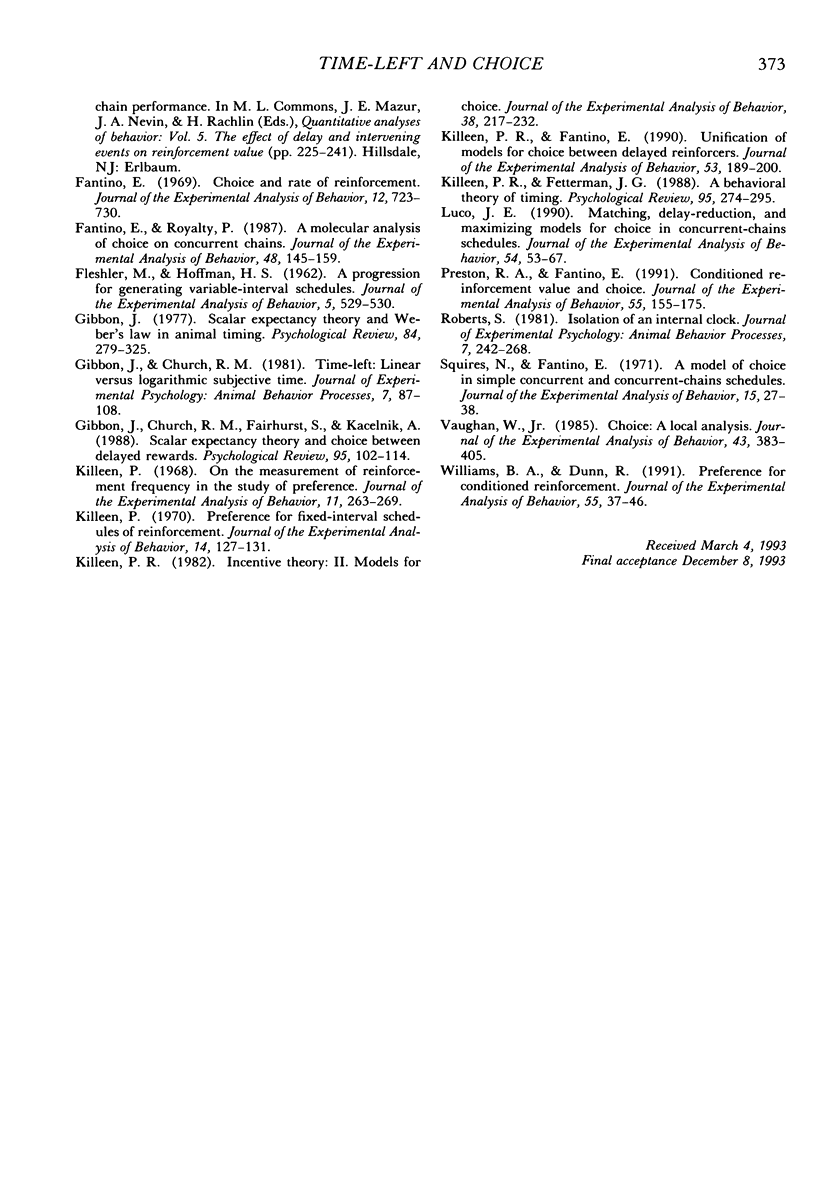
Selected References
These references are in PubMed. This may not be the complete list of references from this article.
- Chung S. H., Herrnstein R. J. Choice and delay of reinforcement. J Exp Anal Behav. 1967 Jan;10(1):67–74. doi: 10.1901/jeab.1967.10-67. [DOI] [PMC free article] [PubMed] [Google Scholar]
- Davison M. C. Preference for mixed-interval versus fixed-interval schedules: number of component intervals. J Exp Anal Behav. 1972 Mar;17(2):169–176. doi: 10.1901/jeab.1972.17-169. [DOI] [PMC free article] [PubMed] [Google Scholar]
- FLESHLER M., HOFFMAN H. S. A progression for generating variable-interval schedules. J Exp Anal Behav. 1962 Oct;5:529–530. doi: 10.1901/jeab.1962.5-529. [DOI] [PMC free article] [PubMed] [Google Scholar]
- Fantino E. Choice and rate of reinforcement. J Exp Anal Behav. 1969 Sep;12(5):723–730. doi: 10.1901/jeab.1969.12-723. [DOI] [PMC free article] [PubMed] [Google Scholar]
- Fantino E., Royalty P. A molecular analysis of choice on concurrent-chains schedules. J Exp Anal Behav. 1987 Jul;48(1):145–159. doi: 10.1901/jeab.1987.48-145. [DOI] [PMC free article] [PubMed] [Google Scholar]
- Gibbon J., Church R. M., Fairhurst S., Kacelnik A. Scalar expectancy theory and choice between delayed rewards. Psychol Rev. 1988 Jan;95(1):102–114. doi: 10.1037/0033-295x.95.1.102. [DOI] [PubMed] [Google Scholar]
- Killeen P. R., Fantino E. Unification of models for choice between delayed reinforcers. J Exp Anal Behav. 1990 Jan;53(1):189–200. doi: 10.1901/jeab.1990.53-189. [DOI] [PMC free article] [PubMed] [Google Scholar]
- Killeen P. R., Fetterman J. G. A behavioral theory of timing. Psychol Rev. 1988 Apr;95(2):274–295. doi: 10.1037/0033-295x.95.2.274. [DOI] [PubMed] [Google Scholar]
- Killeen P. R. Incentive theory: II. Models for choice. J Exp Anal Behav. 1982 Sep;38(2):217–232. doi: 10.1901/jeab.1982.38-217. [DOI] [PMC free article] [PubMed] [Google Scholar]
- Killeen P. On the measurement of reinforcement frequency in the study of preference. J Exp Anal Behav. 1968 May;11(3):263–269. doi: 10.1901/jeab.1968.11-263. [DOI] [PMC free article] [PubMed] [Google Scholar]
- Killeen P. Preference for fixed-interval schedules of reinforcement. J Exp Anal Behav. 1970 Sep;14(2):127–131. doi: 10.1901/jeab.1970.14-127. [DOI] [PMC free article] [PubMed] [Google Scholar]
- Luco J. E. Matching, delay-reduction, and maximizing models for choice in concurrent-chains schedules. J Exp Anal Behav. 1990 Jul;54(1):53–67. doi: 10.1901/jeab.1990.54-53. [DOI] [PMC free article] [PubMed] [Google Scholar]
- Preston R. A., Fantino E. Conditioned reinforcement value and choice. J Exp Anal Behav. 1991 Mar;55(2):155–175. doi: 10.1901/jeab.1991.55-155. [DOI] [PMC free article] [PubMed] [Google Scholar]
- Squires N., Fantino E. A model for choice in simple concurrent and concurrent-chains schedules. J Exp Anal Behav. 1971 Jan;15(1):27–38. doi: 10.1901/jeab.1971.15-27. [DOI] [PMC free article] [PubMed] [Google Scholar]
- Vaughan W. Choice: A local analysis. J Exp Anal Behav. 1985 May;43(3):383–405. doi: 10.1901/jeab.1985.43-383. [DOI] [PMC free article] [PubMed] [Google Scholar]
- Williams B. A., Dunn R. Preference for conditioned reinforcement. J Exp Anal Behav. 1991 Jan;55(1):37–46. doi: 10.1901/jeab.1991.55-37. [DOI] [PMC free article] [PubMed] [Google Scholar]


